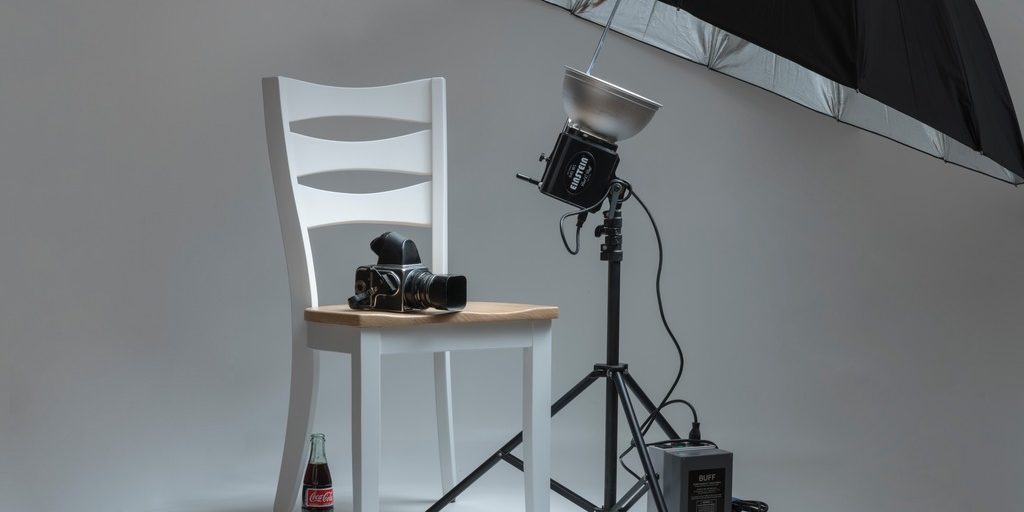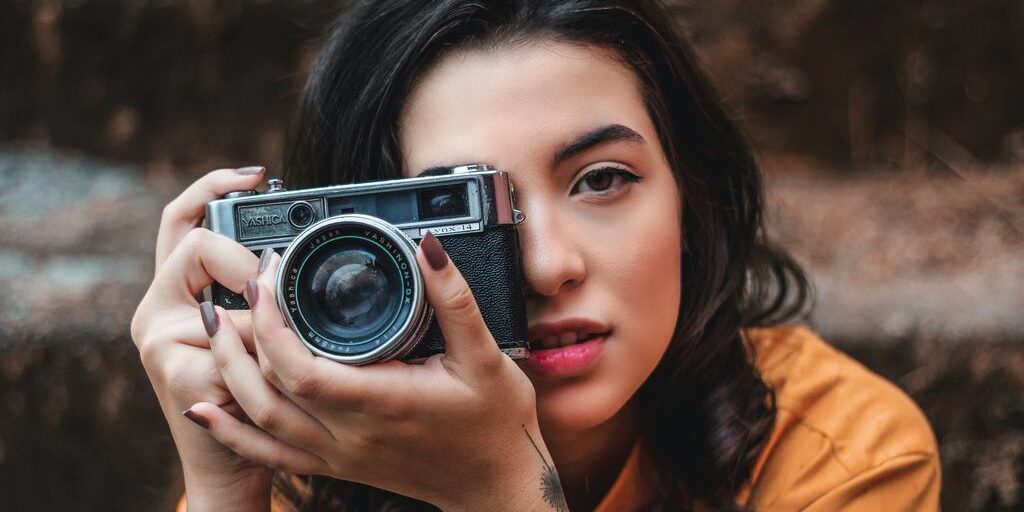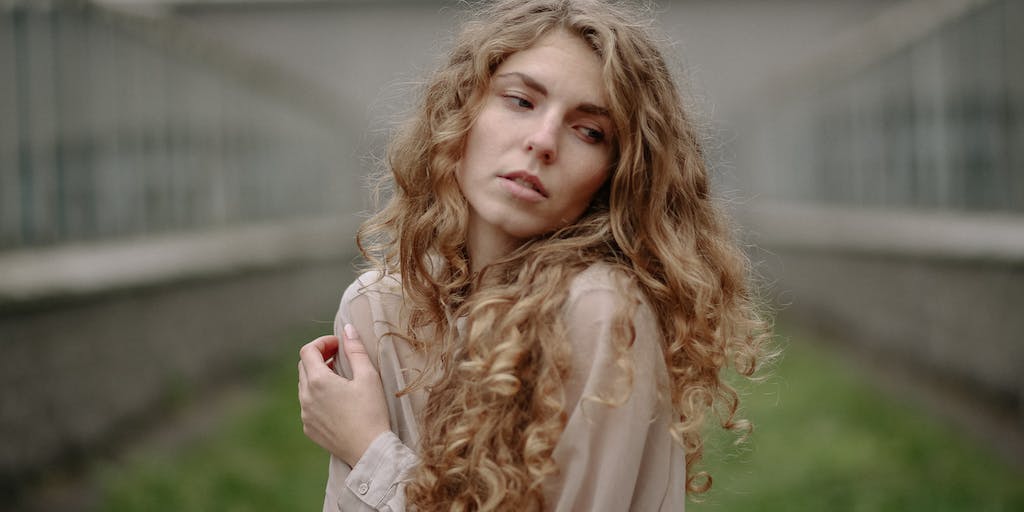Our portrait photography tips our your essential guide to getting started as a top-rated portrait photographer. Portrait photography is a captivating art form that allows photographers to capture the essence and personality of their subjects.
Whether you’re a beginner or an experienced photographer, mastering the art of portrait photography requires a combination of technical skills, creativity, and effective communication with your subjects.
In this guide, we will explore valuable tips and techniques to help you elevate your portrait photography game. From understanding lighting and composition to posing and connecting with your subjects, these tips will assist you in creating stunning portraits that leave a lasting impression.
Portrait photography tips: How to take good portraits

From creating a comfortable and engaging environment for your subjects to utilizing natural light and effective composition, you’ll learn how to capture the personality, emotions, and unique characteristics of your subjects. Whether you’re a beginner or a seasoned photographer, these tips will help you elevate your portrait photography game and create memorable images.
To capture captivating portraits, follow these tips. Firstly, ensure your subject is comfortable and relaxed. Use natural light or soft, diffused lighting for a flattering effect. Pay attention to composition and framing, considering the rule of thirds and leading lines. Encourage natural and genuine expressions by engaging with your subject and maintaining good communication. Experiment with different angles and perspectives. Lastly, post-processing can enhance portraits, but avoid excessive editing. Practice, experiment, and develop your unique style to create stunning and memorable portraits.
15 Must-Know Portrait Photography Tips for Beginners

In this section, we will explore 15 essential portrait photography tips specifically tailored for beginners. Whether you’re just starting or looking to refine your skills, these tips will help you capture outstanding portraits.
From getting to know your subject choosing the right location to master your camera settings and utilizing creative techniques, you’ll learn key aspects of portrait photography that will elevate your images. Whether it’s understanding the power of eye contact, experimenting with angles and props, or embracing light and shadows, these tips will equip you with the knowledge to create impactful and visually stunning portraits. So grab your camera and let’s dive into these must-know tips for capturing memorable portraits.
1. Get to know your subject
Building rapport with your subject is essential. Spend time talking to them, learning about their interests, and putting them at ease. This will help create a relaxed and comfortable atmosphere for the shoot.
2. Scout your location
Explore different locations beforehand to find the best backdrop for your portraits. Consider factors such as lighting, aesthetics, and how they reflect the subject’s personality or theme.
3. Know your camera
Familiarize yourself with the settings and capabilities of your camera. Understand exposure, aperture, shutter speed, and ISO to have full control over your images.
4. Keep samples
Maintain a portfolio of your work to track your progress and showcase your style. This collection will help you evaluate your skills, identify areas for improvement, and inspire future shoots.
5. Mind the eyes
The eyes convey emotion and connection in portraits. Ensure they are in focus and experiment with different focal points to draw attention to this critical element.
6. Evoke genuine expression
Encourage natural and authentic expressions by engaging your subject in conversations, making them feel comfortable, and giving them specific directions to evoke the desired emotion.
7. Change angles
Don’t be afraid to move around and shoot from different angles. Experiment with high and low perspectives, close-ups, and wide shots to add variety and visual interest.
8. Use props
Props can enhance the storytelling aspect of a portrait. Choose items that are relevant to your subject’s personality or profession to add depth and visual appeal.
9. Shoot in RAW and B&W
Shooting in RAW format provides greater flexibility during post-processing, while black and white can add a timeless and artistic touch to your portraits.
10. Use contrast to draw the viewer in
Play with light and shadow to create contrast in your portraits. This technique can add depth and drama, directing the viewer’s attention to the subject.
11. Get in close
Fill the frame with your subject to capture their features and emotions with intimacy. Close-up shots can reveal intricate details and create a powerful connection with the viewer.
12. K.I.S.S
Keep it simple and minimalistic. Avoid cluttered backgrounds or distractions that may detract from the main subject. Let your subject shine.
13. Fill in the frame
Experiment with different compositions and framing techniques. Fill the frame with your subject, eliminating unnecessary empty spaces and drawing attention to the important elements.
14. Embrace shadows
Shadows can add depth, mood, and dimension to your portraits. Don’t be afraid to include them deliberately in your composition to create a striking visual effect.
15. Invest in a good camera
While it’s the photographer and not the equipment that truly matters, investing in a camera with good image quality, interchangeable lenses, and manual control options will provide you with more creative possibilities and help you achieve the desired results.
Remember, practice is key to improving your portrait photography skills. Experiment with these tips, find your own style, and adapt them to suit your unique vision and subjects.
What Makes a Good Portrait Photo?

A good portrait photo is distinguished by several key elements that combine to create a compelling and impactful image.
A good portrait photo has the power to capture the essence of a person, evoking emotions and telling stories through a single image. Whether you’re a beginner or an experienced photographer, understanding these elements will help you create captivating and impactful portrait photographs that resonate with viewers.
So let’s take a closer look at what makes a good portrait photo and how you can incorporate these elements into your work.
Here are some factors that contribute to a good portrait:
Connection and Expression
A successful portrait captures genuine emotion and reveals the subject’s personality. The subject should appear engaged, comfortable, and confident, displaying authentic expressions.
Composition
Careful attention to composition helps draw the viewer’s attention to the subject. Consider factors such as balance, framing, leading lines, and the rule of thirds to create visual harmony and interest.
Lighting
Appropriate lighting is crucial in portrait photography. Whether it’s natural light or artificial lighting, it should flatter the subject, sculpt its features, and create dimension. Avoid harsh shadows or overexposed areas to maintain a balanced lighting effect.
Focus and Depth of Field
The subject’s eyes should be in sharp focus as they serve as the focal point in most portraits. Manage the depth of field to separate the subject from the background, providing a pleasing bokeh effect or maintaining adequate sharpness.
Background and Props
A clean, uncluttered background avoids distractions and keeps the focus on the subject. Props, if used, should be relevant, complement the subject’s story, and add visual interest without overpowering the image.
Composition
Careful attention to composition helps draw the viewer’s attention to the subject. Consider factors such as balance, framing, leading lines, and the rule of thirds to create visual harmony and interest.
Post-processing
Thoughtful post-processing can enhance a portrait, emphasizing colors, tones, and textures, while maintaining a natural look. However, it’s important not to overdo it and retain the authenticity of the subject.
Storytelling
A good portrait tells a story or provides insight into the subject’s character or emotions. It evokes a connection and engages the viewer on an emotional level, leaving a lasting impression.
Remember, while these elements contribute to a good portrait, there is room for creative interpretation. Each photographer brings their own style and vision to their work, resulting in unique and captivating portraits.
How to Make Your Portrait Subject Comfortable?

Follow these detailed techniques to capture creative portraits.
- Begin by establishing a connection with your subject through friendly conversation. Take the time to get to know them, their interests, and their background. Building a personal connection helps establish trust and rapport, making them more at ease.
- Choose a location that is comfortable and familiar to your subject, if possible. Ensure the shooting area is clean, organized, and inviting. Pay attention to factors such as temperature, lighting, and potential distractions that could make your subject uncomfortable.
- Before starting the shoot, explain the process step by step. Discuss your vision for the portraits, the poses you will be attempting, and any props or wardrobe changes involved. This helps manage expectations and gives your subject a sense of control and involvement.
- During the shoot, offer clear instructions and guidance on posing, expression, and body language. Provide reassuring feedback and encouragement to boost their confidence. Creating a positive and supportive environment helps your subjects feel more comfortable and helps bring out their authentic self.
- Infuse humor into the session to create a lighthearted and fun atmosphere. Crack jokes, share funny anecdotes, or use playful prompts to elicit natural smiles and laughter. Laughter can help relax your subject and capture genuine expressions.
- Allow breaks throughout the shoot to give your subject time to relax, stretch, or reflect. This prevents fatigue and maintains their enthusiasm and energy throughout the session.
- Always maintain respect and patience with your subject. Listen to their concerns, boundaries, and preferences. Be understanding and adaptable to their needs, giving them the space and time they require to feel comfortable in front of the camera.
By following these techniques, you create a relaxed and enjoyable environment, resulting in more natural and captivating portraits.
Different Styles of Portrait Photography

Portrait photography encompasses a range of styles, each with its own unique characteristics and artistic approach. Here are some of the different styles of portrait photography:
Traditional/Classic Portraits
This style focuses on capturing formal poses, often in a studio setting. The subject usually looks directly at the camera, with emphasis on their facial features and expressions. Classic lighting setups and backgrounds are commonly used in this style.
Environmental Portraits
In this style, the subject is photographed within their natural surroundings, such as their home, workplace, or a location relevant to their lifestyle. The aim is to portray the subject in their environment, showcasing their personality and illustrating their story.
Candid/Street Portraits
Candid portraits capture subjects in spontaneous and unposed moments. They are often taken in public spaces or street settings, capturing the subject’s genuine emotions or interactions naturally.
Fine Art Portraits
Fine art portraits focus on creating visually striking, artistic images. They often involve creative compositions, unique lighting techniques, and imaginative editing. Fine art portraits aim to convey emotion, mood, and a sense of artistic expression.
Lifestyle Portraits
Lifestyle portraits aim to capture the subject’s everyday life, showcasing their activities, hobbies, or personal interests. These portraits tend to be more relaxed and candid, emphasizing the subject’s experiences and lifestyle choices.
Conceptual Portraits
Conceptual portraits focus on conveying an idea or message through the use of symbolism, props, and creative storytelling. This style often involves elaborate setups, unconventional compositions, and post-processing techniques to create thought-provoking and visually striking images.
Black and White Portraits
Stripping away colour can add a timeless and artistic quality to portraits. Black and white portraits often highlight textures, contrast, and the emotional depth of the subject, providing a classic and elegant look.
These are just a few examples of the various styles within portrait photography. Remember, these styles are not mutually exclusive, and photographers often blend elements from different styles to create their unique vision and aesthetic.
How Post-Process Service Important To Give Portrait A Professional Touch?
Post-processing plays a crucial role in giving portrait photography a professional touch. Here’s why post-processing services are important:
1. Enhancing Image Quality
Post-processing allows photographers to refine and enhance the overall image quality. It involves adjustments to exposure, colour balance, saturation, and sharpness, resulting in a visually appealing and balanced photograph.
2. Correcting Imperfections
Post-processing software and tools enable photographers to correct common imperfections that may occur during the capture process. This includes removing blemishes, reducing skin flaws, adjusting skin tones, and minimizing distractions in the background, ultimately ensuring a polished and flawless final image.
3. Creative Control
Post-processing gives photographers the creative freedom to stylize their images according to their vision or the desired mood. They can experiment with different color grading techniques, add artistic effects, or manipulate the tonal range to create a specific aesthetic and evoke emotions in viewers.
4. Balancing Exposure and Contrast
Sometimes, due to challenging lighting conditions, certain areas of a portrait may be overexposed or underexposed. Post-processing allows photographers to balance the exposure across the image, recover details from shadows or highlights, and create a more visually pleasing and well-balanced image.
5. Selective Editing
Post-processing tools provide the ability to make selective adjustments to specific areas of the image. This allows photographers to focus on enhancing key features, such as emphasizing eyes, brightening smiles, or adding definition to important facial features.
6. Consistency and Branding
Post-processing services can help photographers maintain consistency in their style and branding by applying specific presets or edits to their images. This helps to establish a recognizable and cohesive look across their body of work, making it easier for clients to identify their unique style.
7. Professional Presentation
A professionally edited portrait demonstrates attention to detail and a commitment to delivering high-quality work. Clients often expect a finished product that reflects the photographer’s expertise and showcases the subject in the best possible light. Post-processing services ensure that the final images uphold professional standards and meet or exceed clients’ expectations.
While post-processing enhances the visual appeal and professional quality of portraits, it’s important to strike a balance and avoid excessive editing that might distort the subject’s appearance or create an unrealistic depiction. The goal is to enhance the portrait while maintaining its authenticity and capturing the essence of the subject.






